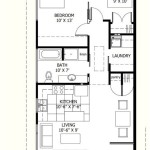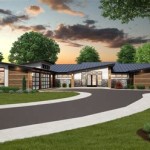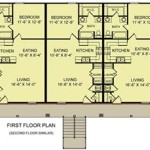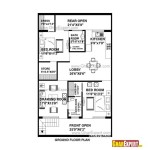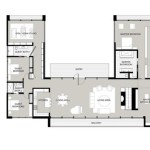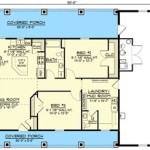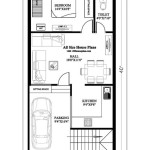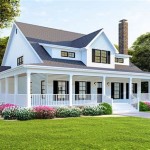English Cottage Style House Plans: A Comprehensive Guide
English Cottage style house plans evoke a sense of warmth, charm, and timeless appeal. These homes, often characterized by their asymmetrical designs, steeply pitched roofs, and use of natural materials, offer a distinct aesthetic that resonates with many homeowners. Understanding the essential elements of this architectural style is crucial for anyone considering building or renovating a home in this tradition.
This article provides a detailed exploration of English Cottage style house plans, covering key architectural features, interior design considerations, landscaping ideas, and considerations for modern adaptations. The information presented aims to provide a comprehensive understanding of the style, enabling informed decision-making for those pursuing this unique and enduring design.
Key Architectural Features of English Cottage Style Homes
Identifying the defining architectural characteristics is paramount to understanding and implementing English Cottage style house plans. These features work in concert to create the distinct look associated with this design tradition.
Asymmetrical Design: A hallmark of English Cottage style is its deliberate lack of symmetry. The house is rarely perfectly balanced, with features like gables, windows, and doors placed in seemingly random yet harmonious arrangements. This asymmetry contributes to the home's organic and informal feel, suggesting a structure that has evolved over time rather than been built according to rigid plans. Uneven rooflines and varying window sizes further enhance this aesthetic.
Steeply Pitched Roofs: The roof is a prominent feature, often characterized by its steep pitch. This not only contributes to the visual appeal but also serves a practical purpose, particularly in regions with heavy rainfall or snowfall. Dormers are frequently incorporated into the roof design, adding visual interest and providing natural light to attic spaces. The roof material itself often consists of slate, wood shingles, or clay tiles, all contributing to the overall rustic charm.
Use of Natural Materials: English Cottage style emphasizes the use of natural materials, both on the exterior and interior of the home. Stone, brick, and wood are commonly used for cladding, adding texture and visual interest. Exposed beams, wooden floors, and stone fireplaces are often incorporated into the interior design, further reinforcing the connection to nature. The selection of materials is crucial for achieving the authentic look and feel of an English Cottage.
Multi-Paned Windows: Windows play a significant role in the overall design. Multi-paned windows, often featuring small rectangular panes separated by wooden muntins, are a common element. These windows contribute to the cottage's charming aesthetic and allow ample natural light to filter into the interior. Casement windows or double-hung windows are typically chosen, often adorned with window boxes filled with colorful flowers.
Arched Doorways and Entrances: The entrance to an English Cottage style home is often a focal point, frequently featuring an arched doorway. This arched detail adds a touch of elegance and visual interest, softening the overall appearance of the home. The front door is typically made of wood, often painted in a vibrant color to create a welcoming and inviting entrance.
Prominent Chimneys: Large, prominent chimneys are another defining characteristic of English Cottage style homes. These chimneys are often constructed from brick or stone and serve as a visual reminder of the warmth and comfort within the home. Multiple chimneys may be present, reflecting the presence of fireplaces in various rooms throughout the house.
Interior Design Considerations for English Cottage Style Homes
The interior design of an English Cottage style home should complement the exterior architecture, creating a cohesive and charming living space. Key considerations include the use of color, furniture, and décor to achieve the desired aesthetic.
Warm and Inviting Color Palettes: The color palette for an English Cottage style interior typically consists of warm and inviting tones. Creams, beiges, soft yellows, and muted greens are commonly used for walls and ceilings. These colors create a sense of spaciousness and allow for the incorporation of bolder colors in furniture and accessories. Pops of color, such as reds, blues, and floral patterns, are often used to add visual interest and personality.
Comfortable and Functional Furniture: Furniture should be comfortable, functional, and slightly rustic in appearance. Oversized sofas, armchairs, and upholstered pieces are typical choices, providing a cozy and inviting atmosphere. Antique or vintage furniture is often incorporated to add character and a sense of history. Natural materials, such as wood, leather, and linen, are commonly used in furniture construction.
Exposed Beams and Wooden Floors: Exposed beams and wooden floors are quintessential elements of an English Cottage style interior. These features add warmth, texture, and a rustic charm to the space. Wooden floors are typically finished with a natural stain or painted in a light color to enhance the feeling of spaciousness. Exposed beams can be left natural or painted to complement the overall color scheme.
Floral Patterns and Textiles: Floral patterns and textiles are heavily used in English Cottage style interiors. Floral wallpapers, curtains, and upholstery add a touch of whimsy and romance to the space. Textiles such as linen, cotton, and wool are commonly used, often featuring embroidered details or delicate patterns. Layering textiles creates a sense of depth and visual interest.
Fireplaces and Hearth Areas: Fireplaces are a central feature of English Cottage style homes, providing warmth, comfort, and a focal point for gathering. Stone or brick fireplaces are common, often featuring a large hearth and a decorative mantel. The hearth area is typically adorned with candles, vases, and other decorative items.
Accessorizing with Antiques and Collectibles: Accessorizing with antiques and collectibles adds personality and character to an English Cottage style interior. Vintage china, antique mirrors, and framed artwork are often displayed throughout the home. These items add a sense of history and create a unique and personalized living space.
Landscaping Ideas for English Cottage Style Homes
The landscaping surrounding an English Cottage style home should complement the architecture, creating a seamless transition between the interior and exterior spaces. A key element is the creation of an informal and naturalistic garden.
Informal Gardens with Abundant Planting: English Cottage gardens are typically characterized by their informality and abundance of planting. Flowers, herbs, and vegetables are often grown together in a seemingly random yet harmonious arrangement. Overgrown plants and self-seeding flowers contribute to the garden's wild and natural appearance.
Use of Native Plants: Incorporating native plants into the landscape is essential for creating an authentic English Cottage garden. Native plants are well-suited to the local climate and require less maintenance than non-native species. They also attract local wildlife, contributing to the garden's biodiversity.
Winding Pathways and Stone Patios: Winding pathways and stone patios add to the charm and functionality of an English Cottage garden. Pathways made of gravel, stone, or brick meander through the garden, inviting exploration. Patios provide a space for outdoor seating and entertaining, creating a seamless connection between the interior and exterior spaces.
Climbing Plants and Trellises: Climbing plants, such as roses, clematis, and ivy, are often used to adorn the exterior walls of English Cottage style homes. These plants add vertical interest and soften the appearance of the building. Trellises and arbors provide support for climbing plants and create a sense of enclosure within the garden.
Water Features and Bird Baths: Water features, such as ponds, fountains, and bird baths, add to the tranquility and beauty of an English Cottage garden. The sound of running water creates a relaxing atmosphere, and bird baths attract local birds, adding life and movement to the garden.
Use of Garden Ornaments and Sculptures: Garden ornaments and sculptures can be used to add personality and visual interest to an English Cottage garden. Stone statues, terracotta pots, and whimsical figurines are popular choices. These items add a touch of whimsy and create a unique and personalized garden space.
By carefully considering these architectural features, interior design elements, and landscaping ideas, individuals can effectively implement English Cottage style house plans and create a charming and timeless home.

1920s English Cottage Small Homes Books Of A Thousand R Tissington Vintage House Plans Floor

English Cottage House Plans Floor Storybook Homes Plan

Pin On B Architecture Cottages And Bungalows

English Cottage House Plans Storybook Style

English Cottage House Plans Plank And Pillow

English Cottage House Plans Floor Designs Houseplans Com

1935 English Cottage Style Ladies Home Journal Small 20th Century House Plans Floor

English Cottage House Plans Storybook Style

English Cottage House Plans Plank And Pillow

1927 Hepburn By William A Radford Cottage Floor Plans Style House Vintage

